Words like “organic,” “artisan,” “all-natural,” “GMO-free,” and “hand-crafted,” used to matter, once upon a time. Now, you see them on soup cans.
Soon, for multiple reasons, “craft beer” might join the list of trendy words that went from implying real-world consequences to meaningless drivel.
The craft beer industry has begun the sad, slow, steady, inevitable march toward oligopoly.
Anheuser-Busch InBev, Molson Coors, Heineken, and Constellation Brands have been snatching up smaller businesses. Those “Big Four,” in addition to Diageo and Carlsberg Group, own a huge variety of craft companies, and the number of craft companies that have gone to the dark side increases each year.
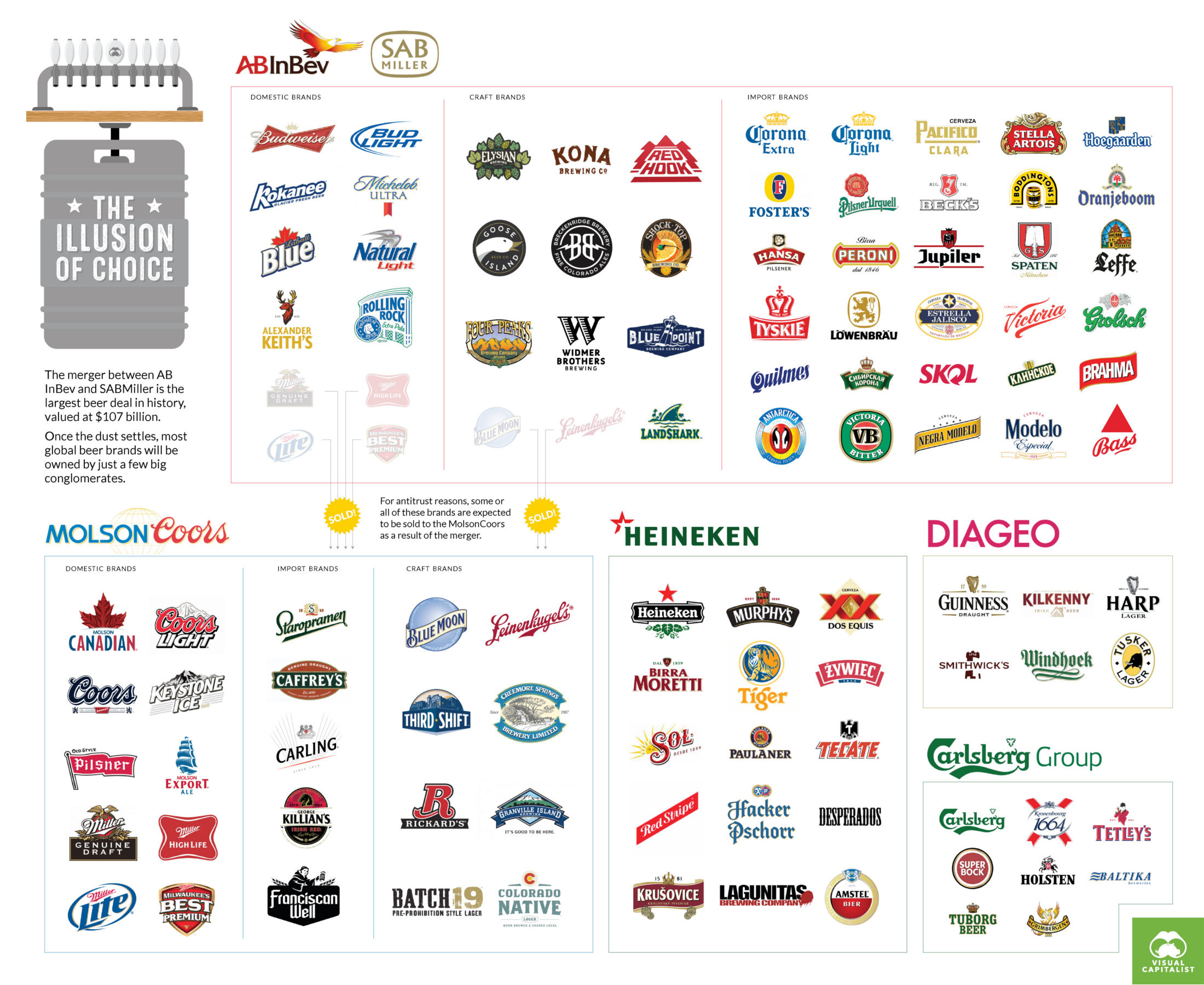 Source: VisualCapitalist.com
Source: VisualCapitalist.com
This has started a huge question of what is or is not craft beer.
While some big conglomerates have tried to be “hands off” with production, it’s impossible to say whether there will be long-term pressure to make more product, for a wider audience, and faster, in the way that all truly capitalistic institutions operate. Will this ownership and oversight eventually lead to piss-poor product, like Bud Light, Coors, Heineken, and Corona (the top brands of the big four)?
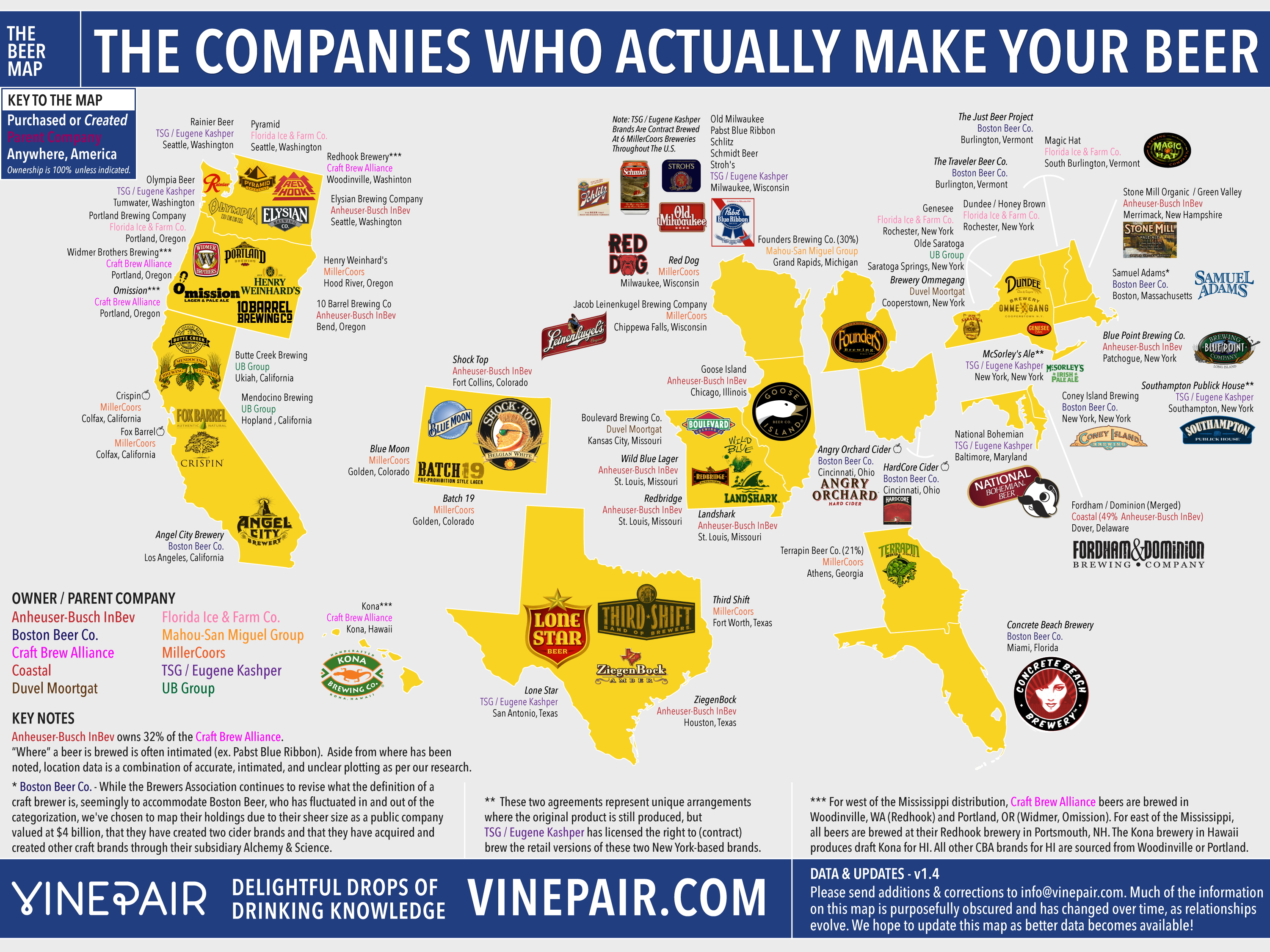 Source: Vinepair.com
Source: Vinepair.com
What is craft beer? Does it need to be independent? Conversations really started with Shock Top and Blue Moon on whether their craftiness had left. Is Blue Moon a craft beer still, since it hasn’t really changed in quality? When the recipe didn’t immediately change, the conversation turned to whether it really mattered.
Here’s the thing: Big beer has lost money to craft beer.
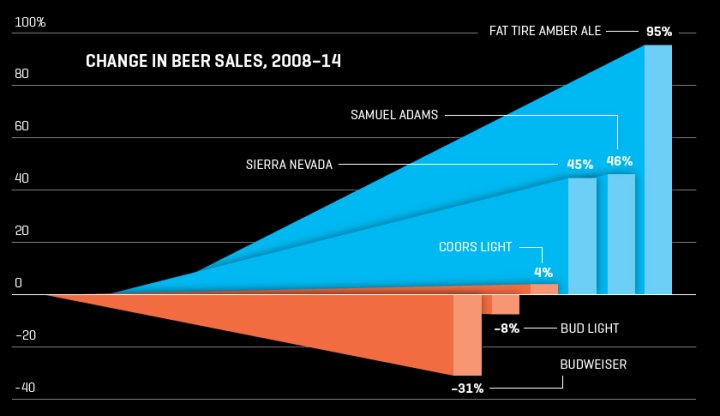 Source: Fortune.com
Source: Fortune.com
The growth rate of the craft brewing industry has slowed somewhat to only 6% in 2016 (which is far lower than the 13% growth rate in 2015), but the four major big beer businesses have experienced massive losses by comparison.
So Big Beer is the one that muddied the definitions.
The plan for the crushing of craft beer began.
It was an excellent plan, and it worked: Create fake craft brands with their own properties. Buy craft breweries who are willing to sell. Change public opinion to make their brands the “real” beer and craft brands “for fussy people.” Provide the distribution services that many craft breweries sorely need, forcing them to work with you. Merge whenever possible.
Divide. Conquer.
It’s hard not to be disgusted with the money-grubbing empires scrambling to give their lifeless brews an identity while painting craft-drinkers as mustache-twirly hipsters (as if that was the worst thing one could be, anyways).
The problem is that the amount of beer generally consumed by Americans has remained consistent for decades.
That’s with the obvious exception of the prohibition.
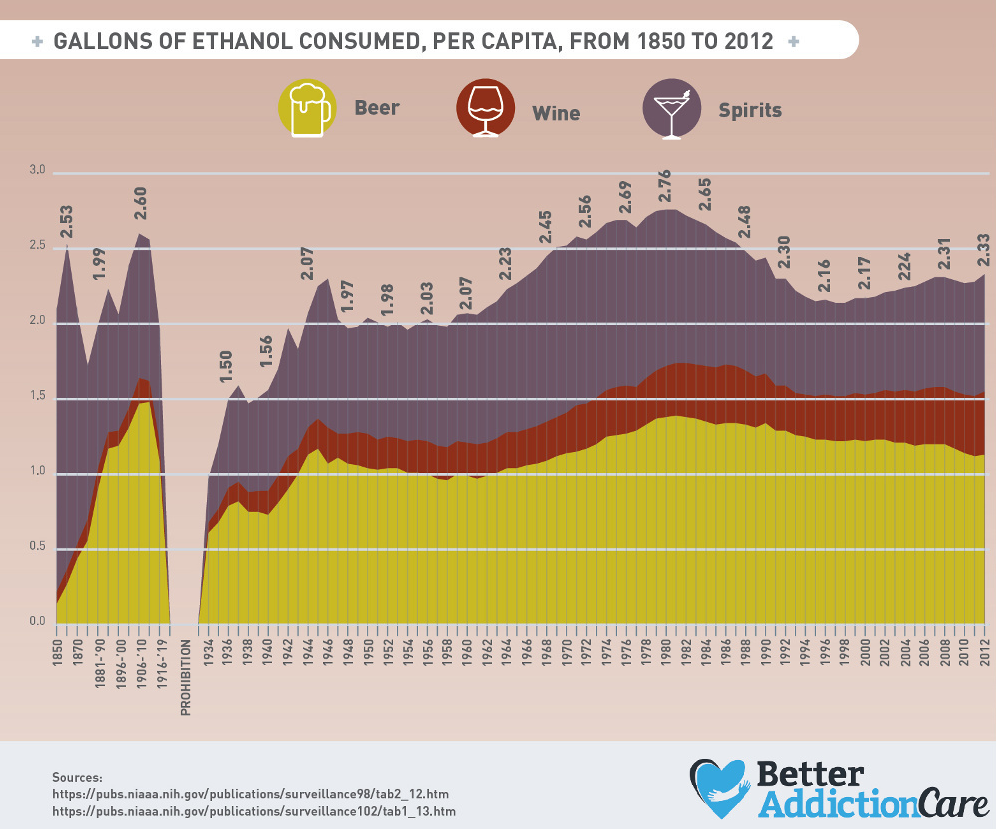 Source: BetterAddictionCare.com
Source: BetterAddictionCare.com
The only difference is the amount a consumer is willing to pay for each beer.
People are just willing to pay more for craft beers. It’s why Anheuser-Busch, Coors, and the major companies need to sink their teeth into this slice of the craft pie.
Source: HuffingtonPost.com
One thing’s clear: Craft is on the rise.
That’s the problem with the craft beer industry. It’s just too successful. There were 620 new breweries in 2015 with only a 10.8 percent failure rate.
 Source: BusinessInsider.com
Source: BusinessInsider.com
So it’s logical for Big Beer to be afraid of getting pushed out … in theory. Sort of.
What’s likely upsetting them more is the fact that the younger generation isn’t buying their beers, along with things from Kmart or dinner at Applebees. The Budweiser Frogs we saw as children didn’t program us into liking Budweiser. In fact, according to the Brewers Association, a huge, disproportionate number of craft drinkers are millennials. (Maybe the vain attempt to win children’s hearts with frogs, rather than brainwashing us, weirded us out a bit.) Meanwhile, popular shows of that demographic like John Oliver have nothing but open disdain for the product.
Source: BrewersAssociation.org
What Big Beer fails to understand is that craft brewing is a strange business.
Successful craft brewers often work with their competition, constantly “waste” a lot of time and money on innovating, and invest in the livelihoods of own employees. But not many get absurdly rich and most stay within their means. There are exceptionsof very successful business people, but usually a craft brewer gets in the business just to make beer.
They don’t just say that; they mean it.
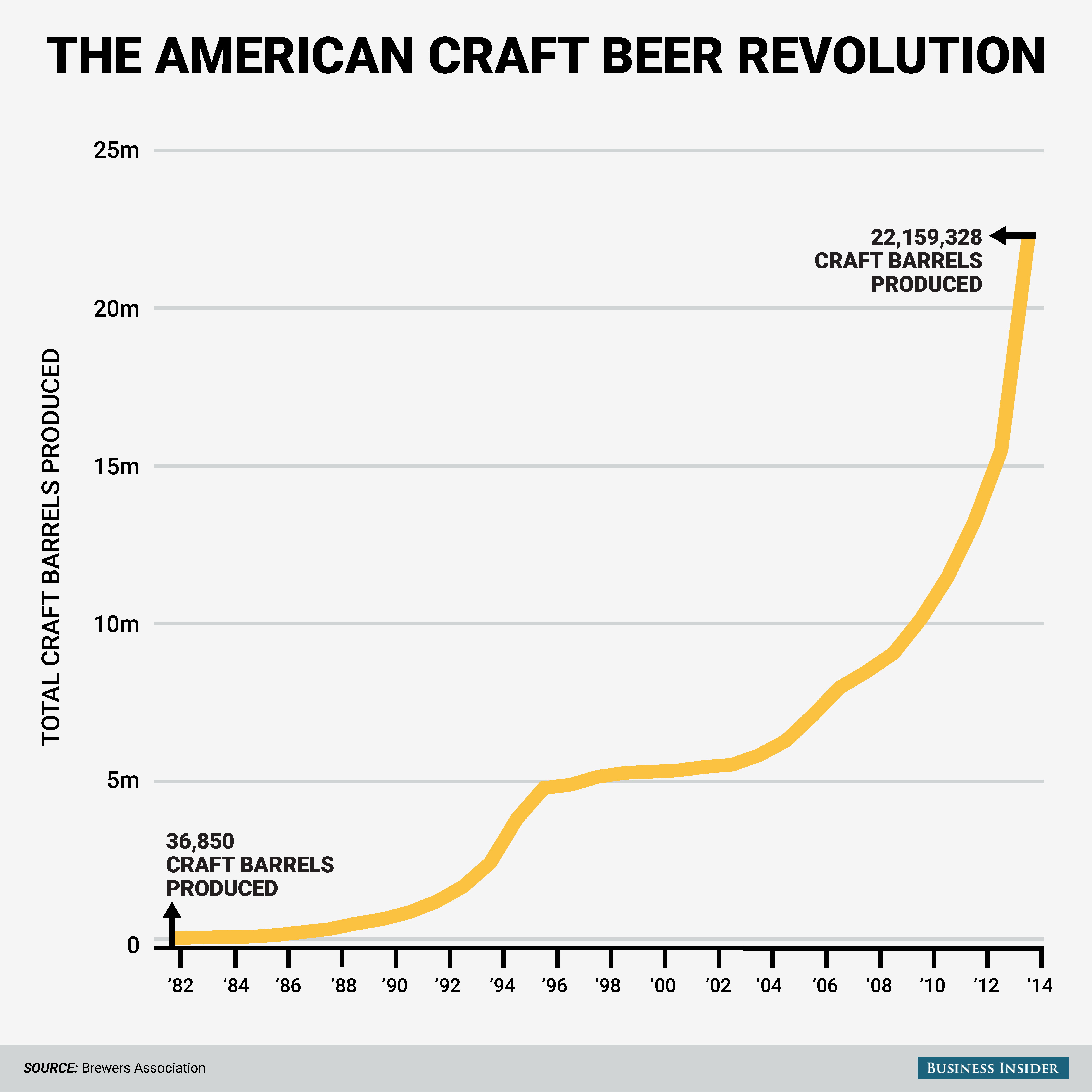 Source: BusinessInsider.com
Source: BusinessInsider.com
Fight the good fight and find craft beers that are independent.
The younger generation loves craft beers, so this war will need to keep being fought.
What’s so interesting about this industry is that it’s a microcosm of many industries in the U.S. now: small artists who only want to be successful enough to do their art and the older oligopolies that are threatened by them.
Take time to find local craft beers from brick-and-mortar breweries and be aware of mergers as they happen.
(Click to view interactive version)
Source: Fortune.com
List of Craft Beers That Are Not Craft Beers in 2017:
The following craft beer companies have been bought by larger ones, according to Men’s Journal and Business Insider:
- 10 Barrel Brewing — Anheuser-Busch InBev
- Ballast Point Brewing — Constellation Brands
- Birra Del Borgo (Italy) — Anheuser-Busch InBev
- Blue Moon Brewing — MillerCoors
- Blue Point Brewing — Anheuser-Busch InBev
- Breckenridge Brewery — Anheuser-Busch InBev
- Cervejaria Colorado (Brazil) — Anheuser-Busch InBev
- Devils Backbone Brewing — Anheuser-Busch InBev
- Dundee Brewing — North American Breweries
- Elysian Brewing — Anheuser-Busch InBev
- Fordham and Dominion Brewing — 40 percent owned by Anheuser-Busch InBev
- Founders Brewing — 30 percent owned by Mahou-San Miguel
- Four Peaks Brewing — Anheuser-Busch InBev
- Golden Road Brewing — Anheuser-Busch InBev
- Goose Island Beer Company — Anheuser-Busch InBev
- Hop Valley Brewing — MillerCoors
- Karbach — Anheuser-Busch InBev
- Kona Brewing — 32 percent owned by Anheuser-Busch InBev
- Lagunitas Brewing — 50 percent owned by Heineken International
- Leinenkugel’s Brewery — MillerCoors
- Magic Hat Brewing — North American Breweries
- Mendocino Brewing — United Breweries Group
- Olde Saratoga Brewing — United Breweries Group
- Omission Larger – Craft Brew Alliance
- Portland Brewing Company (formerly MacTarnahan’s) — North American Breweries
- Pyramid Breweries — North American Breweries
- Redhook Brewery — 32 percent owned by Anheuser-Busch InBev
- Revolver Brewing — MillerCoors
- Saint Archer Brewing — MillerCoors
- Shock Top Brewing — Anheuser-Busch InBev
- Third Shift – MillerCoors
- Terrapin Beer Company — MillerCoors
- Wicked Weed Brewing – Anheuser-Busch
- Widmer Brewing — 32 percent owned by Anheuser-Busch InBev
These Beer Companies are Big, But Still Independent:
- Sierra Nevada Brewing
- Sam Adams (Boston Beer Company)
- New Belgium Brewing
- Yuengling (D.G. Yuengling and Son)
What Should You Drink?
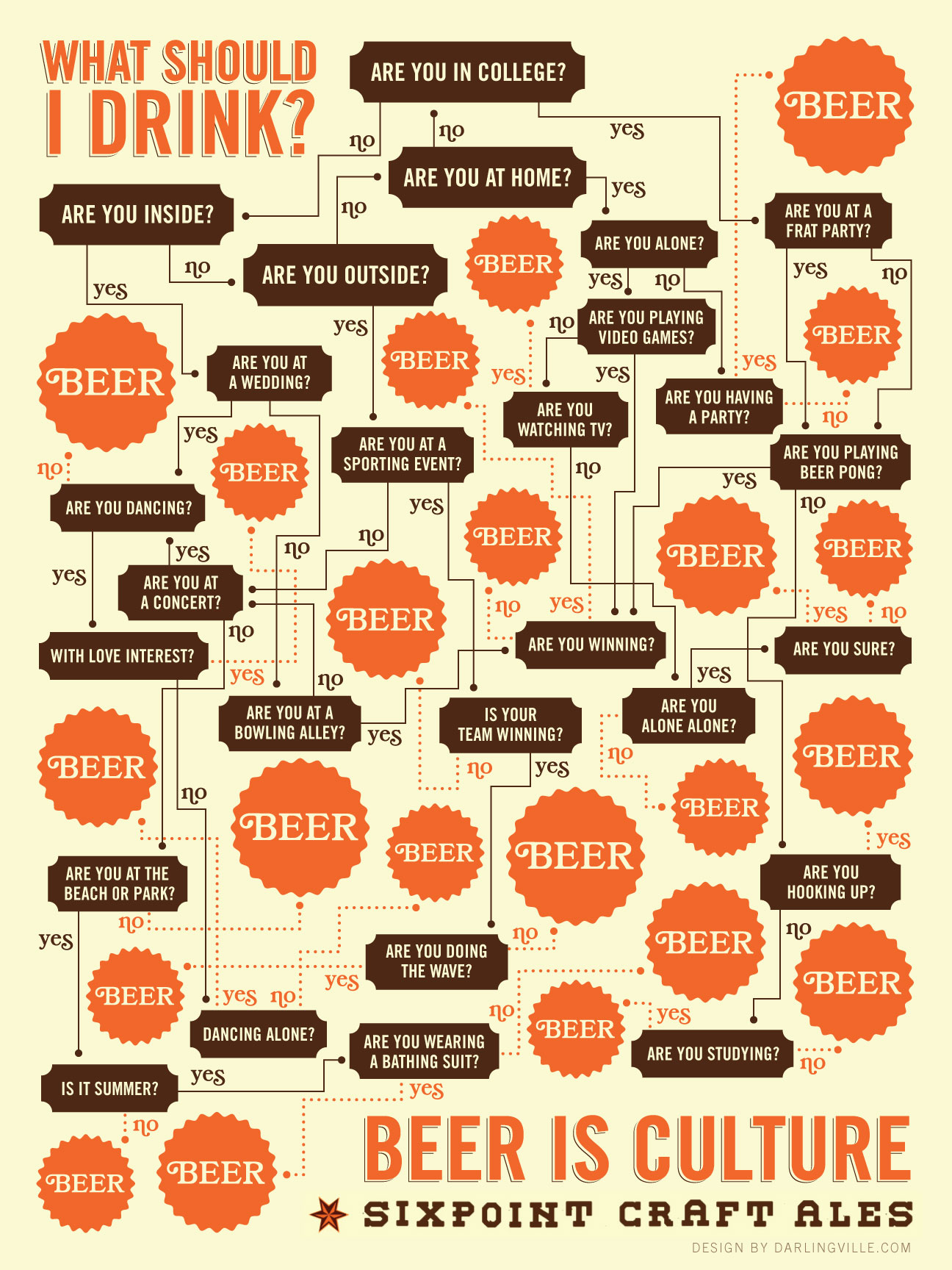 Source: CraftBeerJournal.com
Source: CraftBeerJournal.com

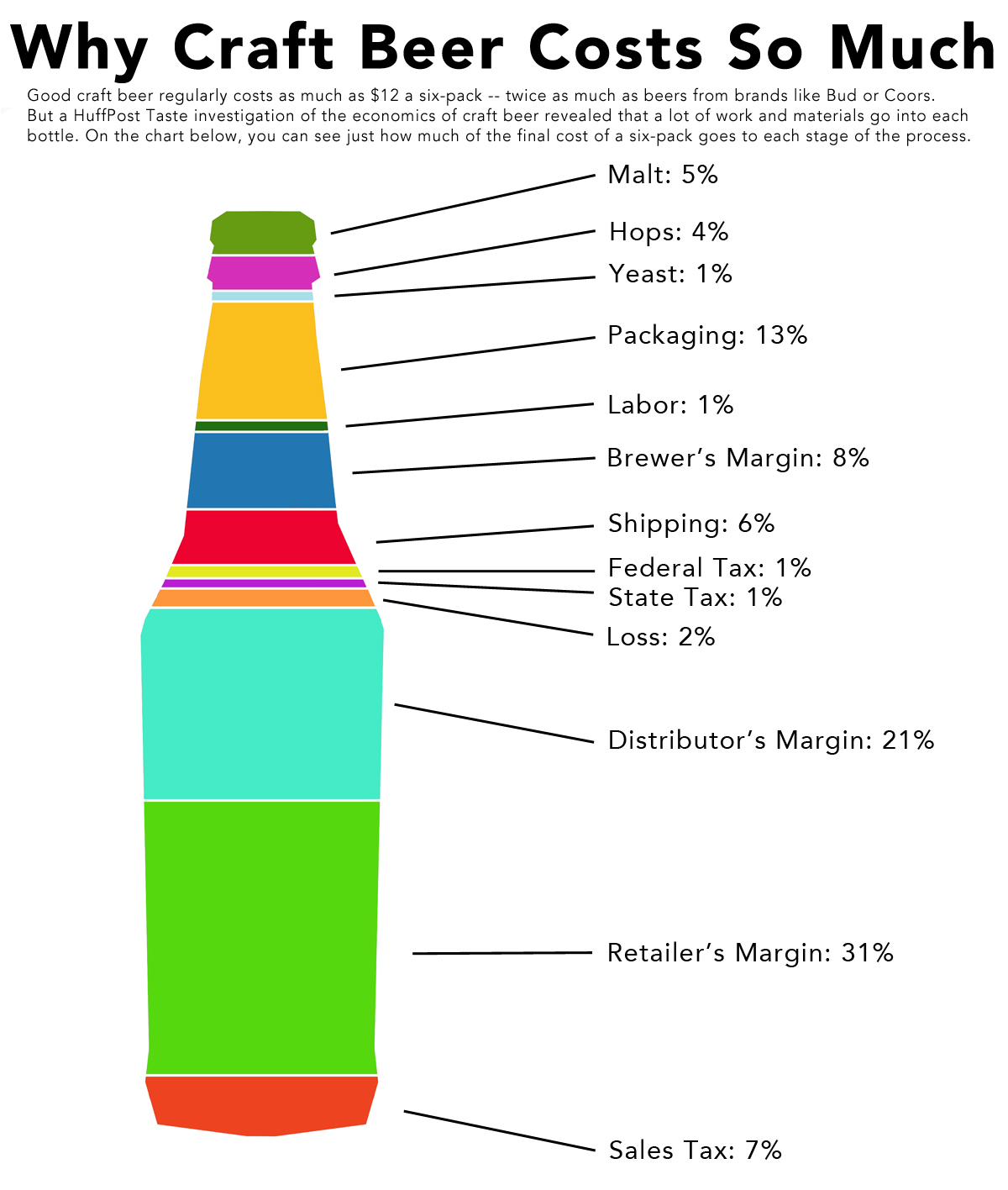
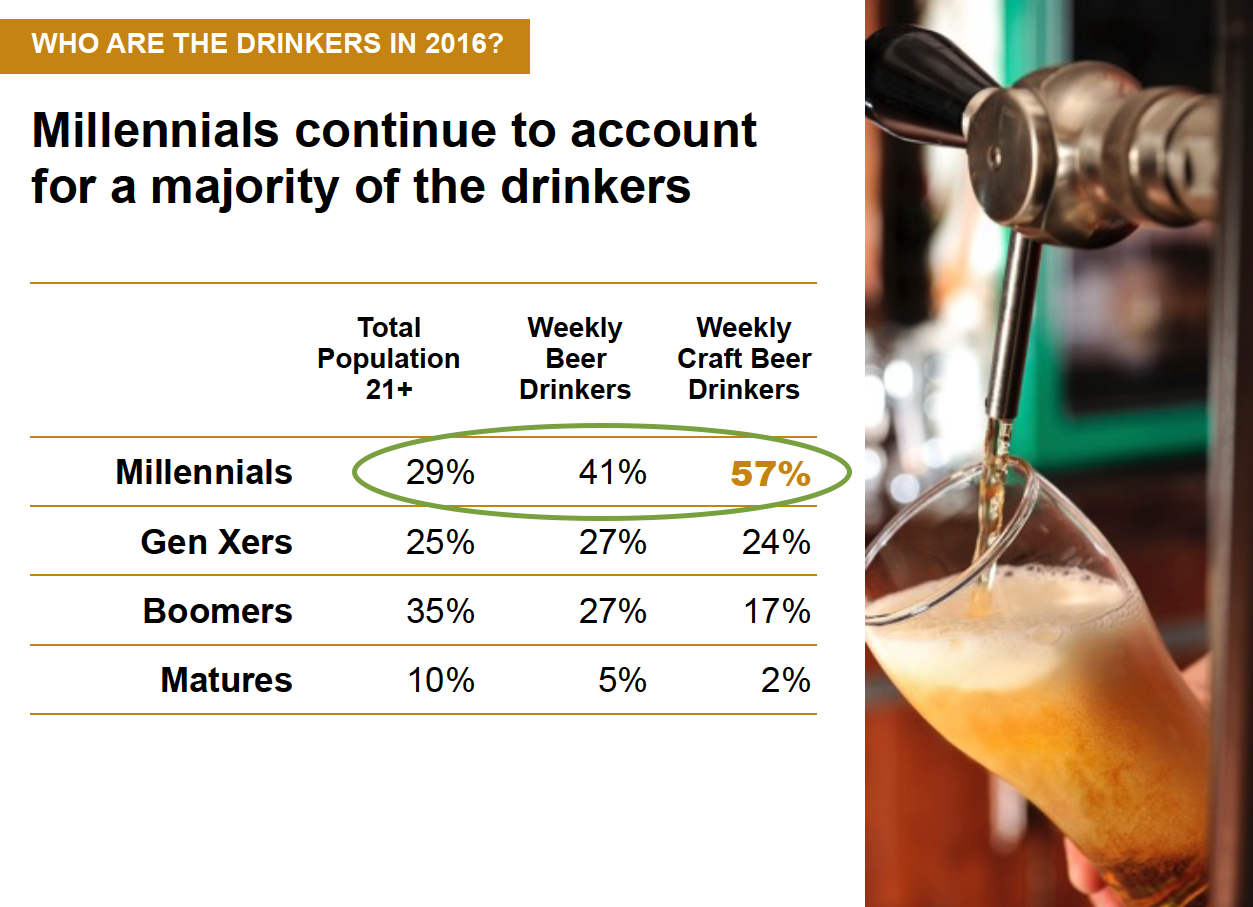

Leave a Reply